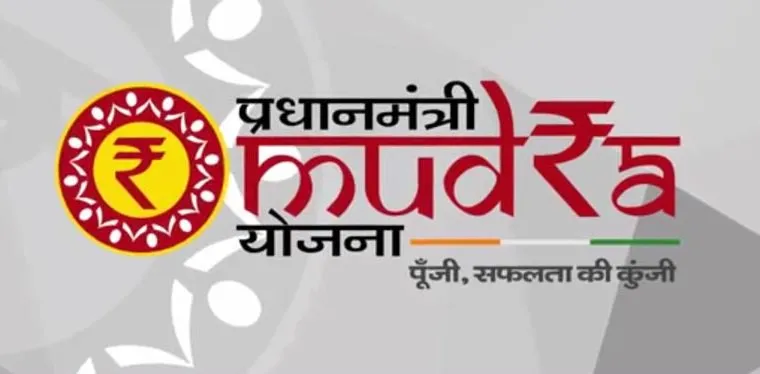Pradhan Mantri Mudra Yojana (PMMY) is a scheme launched by the Government of India to provide loans to micro and small entrepreneurs. The primary objective of this scheme is to promote employment generation and increase income levels, thereby improving the standard of living. Under this scheme, loans are provided to non-agricultural enterprises engaged in manufacturing, trading, and services for income generation. Enterprises related to agriculture can also apply for this scheme.
In an era of equality and empowerment of every individual, the Pradhan Mantri Mudra Yojana comes in like a breath of fresh air. By providing varied loans at reasonable rates, the scheme encourages SMEs and MSEs. In the long run, this provides a much-needed impetus to our economy, fostering an inclusive and prosperous future for all.

Understanding Pradhan Mantri Mudra Yojana (PMMY)
Some of the largest enterprises start at humble beginnings. Cash-strapped with limited technological adoption, it is often difficult for smaller businesses to grow. To overcome the challenges that small enterprises face, the Government has initiated the Pradhan Mantri Mudra Yojana (PMMY). The PMMY is an important initiative by the Government of India. It was launched in 2015 by Prime Minister Narendra Modi. The aim is to encourage small and medium enterprises (SMEs) and aid them with loans. Here are six important aspects of the Pradhan Mantri Mudra Yojana.
6 Key Facts About The Pradhan Mantri Mudra Yojana
Individuals from the economically weaker sections of society often do not have the required funds or support to start their businesses. The PMMY attempts to help them with the following initiatives:
Types of Loans Under The Pradhan Mantri Mudra Yojana
There are three kinds of loans provided under the PMMY, based on the enterprise:
- Shishu Loan: Up to Rs 50,000. This is for fledgling SMEs who are just starting their business.
- Kishor Loan: Ranging between Rs 50,000 to Rs 5 lakh. This is for medium-scale businesses.
- Tarun Loan: Ranging between Rs 5 lakh to Rs 10 lakh. This is for larger operations that require more funding.
Eligibility Criteria for The Pradhan Mantri Mudra Yojana
To avail of loans under the Pradhan Mantri Mudra Yojana, applicants must meet certain criteria:
- Age limit: Applicants should be in the age group of 18-65 years.
- The applicant should have valid proof of identity and address.
Loans under PMMY can be availed by the following enterprises:
- Artisans involved in handwork, such as embroidery, dyeing-printing, and jewellery-making units.
- Small-scale retail shops.
- People in agricultural initiatives like poultry, fishery, beekeeping, and agro-processing.
- People involved in the food sector (small, homegrown setups making pickles, sweets, bakes, etc., and scaling their operations).
- Purchase of vehicles like trucks and tempo which will be used in the course of business.
- Professionals such as doctors and lawyers.
- Small-service industries such as salons, repair stores, tailoring units, beauty parlours, and printing shops.
Institutions Providing Loans Under Pradhan Mantri Mudra Yojana
Individuals seeking loans can approach authorized Public and Private sector Commercial Banks, Cooperative Banks, or Regional Rural Banks (RRB). Micro Financial Institutions and Non-Banking Financial Companies can also be approached for these loans.
Important Documentation Under Pradhan Mantri Mudra Yojana
These are crucial documents without which the loan initiation process cannot start:
- Aadhaar card, Voter ID, or Passport.
- Two passport-sized colour photos.
- Address proof such as an Aadhaar card, Voter ID, or Driving license.
- Income tax returns for the last two years.
- Business registration documents (GST, MSME registration, etc.).
- Individual’s Business Plan.
Pradhan Mantri Mudra Portal Access
The process is simple and user-friendly:
- Interested parties need to first go to the official website for PMMY.
- Click the login for the PMMY portal link.
- Fill in details regarding username and password on the login form.
- Once cleared, one can access the PMMY portal.
Benefits of The Pradhan Mantri Mudra Yojana
The PMMY has augmented the growth of small and medium-scale industries. Here are the key benefits of this scheme:
- Financial Support: The loans support individuals from weaker sections and disadvantaged sectors. They can promote their skills and scale up in due time, to set up small industries.
- No Upfront Fee: There is no collateral on the loan, hence no initial fee is to be paid by the borrower.
- Reasonable Interest Rate: The Government provides interest rate subsidies for individuals to encourage them and make it easier.
- Easy Tracking of Loan Status: The loan is monitored through the portal ‘udyamitra’. Hence, the borrower can easily track the loan status at any time.
- Funds Can Be Used for Setting Up a Business: The loan procured can be used by the individual towards the purchase of machinery, raw materials, and equipment. This supports the individual’s initial working capital requirement.
- Increase Employment and Industrial Production: With more industries coming up, there are more employment opportunities. Many of these units are small-scale, requiring artisans to do handwork, for instance, the handicraft sector. Hence, there are more work possibilities and individuals can hope for a better standard of living.
- Fosters Growth and Opportunity: The PMMY scheme brings in positivity and inclusivity for smaller communities. With the financial burden eased for individuals, it fosters an entrepreneurial spirit. Women entrepreneurs can also fulfill their aspirations by getting reasonable loans to initiate their businesses.
Challenges of The Pradhan Mantri Mudra Yojana
Despite its significant growth and success, PMMY faces certain challenges:
- Awareness: Many potential beneficiaries are unaware of the scheme or do not understand how to apply.
- Implementation: Ensuring that the loans reach the intended recipients and are used for productive purposes is a challenge.
- Repayment: Ensuring that borrowers can repay their loans on time is crucial for the scheme’s sustainability.